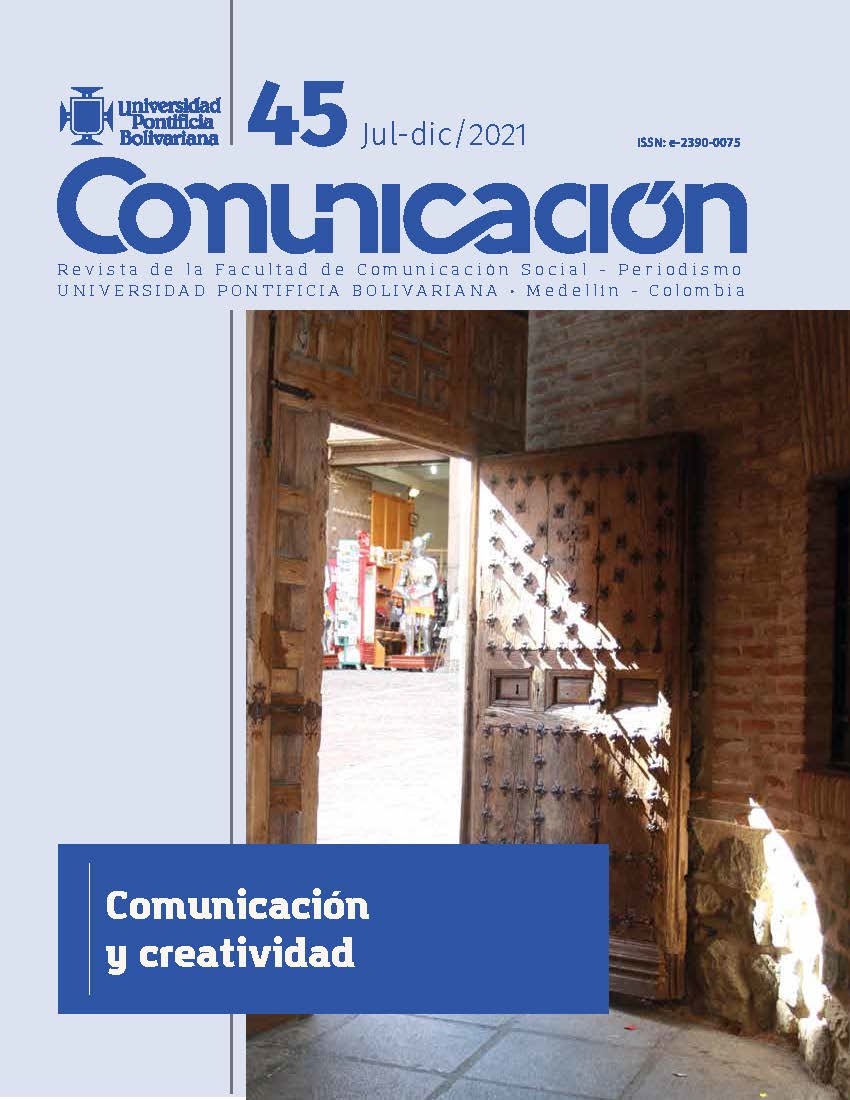Communication and social media in times of COVID-19
Main Article Content
Abstract
The present work aimed to identify the use, dependence and trust that was had in the media and social media at the beginning of the quarantine decreed
by the Mexican State on the occasion of the arrival of the coronavirus in Mexico. The methodology used in order to respond to the initially proposed
objective was the survey technique. The results indicate that during the quarantine period both the use of the mass and social media increased
notably. The results show that, even when the evidence indicates that social media (internet and its different apps) were the most used tools during the quarantine, in the city of Monterrey (Nuevo Leon) and its metropolitan area, people indicated that the mass media was the source that offered them the best information on the subject. Specifically, the people surveyed maintained that television newscasts were the source from which they obtained the most reliable information to make decisions to face the health crisis that prevailed during that time.
References
Arévalo Avecillas, D. X. y Padilla Lozano, C. P. (2016). Medición de la confiabilidad del aprendizaje del Programa RStudio mediante alfa de Cronbach. Revista Politécnica, 37(1), 68. https://revistapolitecnica.epn.edu.ec/ojs2/index.php/revista_politecnica2/article/view/469
Elliot, R. (2020). Coronavirus in Sub-Saharan Africa: data shows changing food habits, increased testing. GeoPoll. https://www.geopoll.com/blog/2020/05/
Fuenzalida, V. (1989). Visiones y ambiciones del televidente: estudios de recepción televisiva. Ceneca.
García, D. (2019, mayo 15). NL, tercer lugar con usuarios de internet en México. Diario Milenio. https://www.milenio.com/negocios/nl-tercer-lugar-con-usuarios-deinternet#:~: text=Particularmente%2C%20en%20el%20caso%20de,por%20ciento%20 de%20la%20poblaci%C3%B3n
González, X. (2020, abril 9). Así ha cambiado el consumo de los medios a causa de la pandemia. La República. https://www.larepublica.co/globoeconomia/asi-ha-cambiadoel-consumo-de-los-medios-a-causa-de-la-pandemia-2990412 chica 9/04/2020
Greenberg, B. S. (1974). Gratifications of television viewing and their correlates for British children. En J. G. Blumler y E. Katz (Eds.), The uses of mass communications: current perspectives on gratifications research (pp. 71-92). Sage.
IAB México. (2020). Estudio de consumo de medios y dispositivos entre internautas mexicanos. El internauta frente al COVID-19. IAB México. https://www.iabmexico.
com/estudios/estudio-de-consumo-de-medios-y-dispositivos-entre-internautasmexicanos-2019/
Instituto Nacional de Estadística y Geografía [INEGI]. (2021). México en cifras. Instituto Nacional de Estadística y Geografía. 2020. Censo de Población y Vivienda. https://censo2020.mx/
Ireton, C. y Posetti, J. (2018). Journalism, ‘fake news’ and disinformation: a handbook for journalism education and training. Unesco.
Katz, E., Gurevitch, M. y Hass, J. B. (1986). Usos y gratificaciones de la comunicación de masas. En M. de Moragas Spá. (Coord.), Sociología de la comunicación de masas (pp.127-171). Gustavo Gili.
Lampos, V., Majumder, M. S., Yom-Tov, E., Edelstein, M., Moura, S., Hamada, Y., Rangaka, M. X., McKendry, R. A. y Cox, I. J. (2021). Tracking COVID-19 using online search. Nature Digital Medicine, 4(17). https://doi.org/10.1038/s41746-021-00384-w
Lazer, D. M. J., Baum, M. A., Benkler, Y., Berinsky, A. J., Greenhill, K. M., Menczer, F., Metzger, M. J., Nyhan, B., Pennycook, G., Rothschild, D., Schudson, M., Sloman, S. A., Sunstein, C. R., Thorson, E. A., Watts, D. J. y Zittrain J. L. (2018). The science of fake news. Science, 359(6380), 1094-1096. 10.1126/science.aao2998. https://science.sciencemag.org/content/359/6380/1094
Lozano, J. C. (2007). Teoría e investigación de la comunicación de masas. Pearson Educación.
Martínez, L. E. y Martínez Espinoza, L. (2014). Periodismo, Twitter y la audiencia activa [PDF]. VI Congreso Internacional de Ciberperiodismo y Web 2.0. “Las audiencias como garante de la calidad de la información en los cibermedios”. Servicio editorial de la Universidad del País Vasco. https://addi.ehu.es/bitstream/handle/10810/15610/UWLGCI0537. pdf?sequence=1&isAllowed=y
McCroclin, S. (2020, mayo 27). Coronavirus in Uganda: impact on media consumption. GeoPoll. https://www.geopoll.com/blog/coronavirus-uganda-media/
Morley, D. (1993). Active audience theory: pendulums and pitfalls. Journal of communication, 43(4), 13-19.
Muno, M. (2020, abril 17). Coronavirus: los medios de comunicación y su credibilidad. DW. https://www.dw.com/es/coronavirus-los-medios-de-comunicación-y-sucredibilidad/a-53167054
Norris, P. (2015). Movilización política y redes sociales. El ejemplo de la Primavera Árabe [PDF]. Revista Iberoamericana de Comunicación, 9, 17-36. https://dialnet.unirioja.es/servlet/articulo?codigo=5148403
Oberiri Destiny, A. y Bahiyah, O. (2017). “Fake news”: false fears or real concerns? Netherlands Quarterly of Human Rights, 35(4), 203-209. https://doi.org/10.1016/j.
tele.2020.101475
Organización Mundial de la Salud [OMS]. (2020). Nuevo coronavirus - China. https://www.who.int/csr/don/12-january-2020-novel-coronavirus-china/es/
Park, H. y Blenkinsopp, J. (2009). Whistleblowing as planned behavior - A survey of south korean police officers. Journal of Business Ethics, 85(4), 545-556. https://doi.org/10.1007/s10551-008-9788-y
Pennycook, G., McPhetres, J., Zhang, Y., Lu, J. G. y Rand, D. G. (2020). Fighting COVID-19 misinformation on social media: experimental evidence for a scalable accuracy-nudge intervention. Psychological Science, 31(7), 770-780.
Pulido, C. M., Villarejo Carballido, B., Redondo Sama, G. y Gómez, A. (2020). COVID-19 infodemic: more retweets for science-based information on coronavirus than for false information. International Sociology, 1-16. http://dx.doi.org/10.1177/0268580920914755
Stoychev, K. (2020, junio 30). Gallup: el miedo al coronavirus crece en todo el mundo. DW. https://www.dw.com/es/gallup-el-miedo-al-coronavirus-crece-en-todo-elmundo/a-53190509
Thompson, N., Wang, X. y Daya, P. (2019). Determinants of news sharing behavior on social media. Journal of Computer Information Systems, 60(6), 593-601. https://doi.org/10.108 0/08874417.2019.1566803
Vázquez, R. (2020, marzo 26). Durante la crisis del COVID-19 los medios tradicionales ganan credibilidad. Forbes. https://www.forbes.com.mx/durante-la-crisis-del-COVID-19-losmedios-tradicionales-ganan-credibilidad/
Zhou, X. y Zafarani, R. (2020). Fake news: a survey of research, detection methods, and opportunities. ACM Computing Surveys, 53(5). https://doi.org/10.1145/3395046






